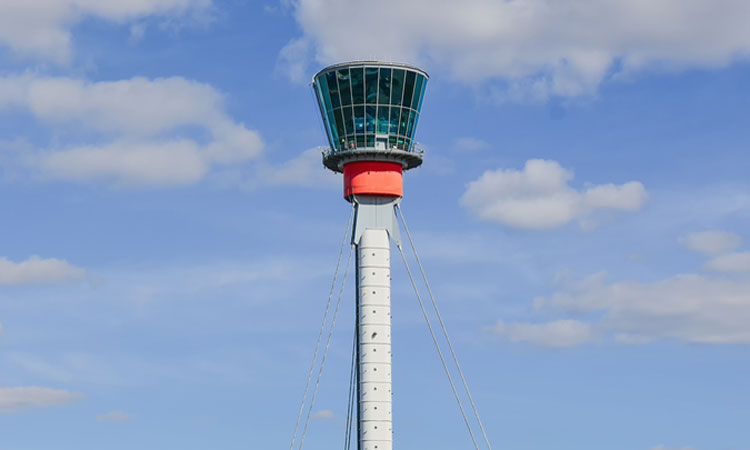NATS has begun a trial of AI technology at Heathrow to cut delays
- Like
- Digg
- Del
- Tumblr
- VKontakte
- Buffer
- Love This
- Odnoklassniki
- Meneame
- Blogger
- Amazon
- Yahoo Mail
- Gmail
- AOL
- Newsvine
- HackerNews
- Evernote
- MySpace
- Mail.ru
- Viadeo
- Line
- Comments
- Yummly
- SMS
- Viber
- Telegram
- Subscribe
- Skype
- Facebook Messenger
- Kakao
- LiveJournal
- Yammer
- Edgar
- Fintel
- Mix
- Instapaper
- Copy Link
Posted: 24 January 2019 | International Airport Review | No comments yet
The artificial intelligence technology could reclaim 20 per cent of lost capacity caused by low cloud and reduced visibility from the control tower.


At Heathrow’s air traffic control tower, NATS have developed a digital tower laboratory which combines ultra HD 4K cameras with AI and machine learning technology to help to boost the capacity of the UK’s busiest airport.
Heathrow’s 87-metre tall control tower is the highest in the UK, but its height can also mean it disappears into low cloud, even when the runways below are clear.
In those conditions, where the controllers have to rely on radar to know if an arriving aircraft has left the runway, extra time is given between each landing to ensure its safety. The result is a 20 per cent loss of landing capacity, which creates delays for passengers and knock-on disruption for the rest of the operation.
NATS is deploying 20 ultra high-definition cameras at the airfield, the views from which are then fed into an AI platform called AIMEE, developed by the Canada-based Searidge Technologies. The AIMEE platform can interpret the images, track the aircraft and then inform the controller when it has successfully cleared the runway. The controller then makes the decision to clear the next arrival.
NATS believes the system will help the airport reclaim all the lost capacity. Andy Taylor, NATS Chief Solution Officer, at the press conference hosted at the ATC tower at Heathrow said: “The lab will act as a spring board for other capabilities for air traffic controllers.”
Non-operational trials are now underway to understand the feasibility of introducing the technology into service as early as this year. From now until March, AIMEE will study the behaviour of more than 50,000 arriving aircraft to ensure the accuracy of the system. The project’s findings will then be presented to the Civil Aviation Authority.
Taylor said: “Safety is always our top priority and Artificial Intelligence is about supporting air traffic controllers. While they remain the decision makers at the heart of the operation, we can use it to provide new tools that help them make the best possible decisions and improve efficiency and safety. Right now we’re focusing on when the control tower is in low cloud, where I’m confident we can make a very positive difference, but I am convinced that this technology can totally revolutionise how air traffic is managed at airports around the world.”
The trial is part of a £2.5 million investment NATS has made in a ‘digital tower laboratory’ located inside the Heathrow control tower. There, it is working with the airport to understand how technology could support the air traffic operation now and in the future. The programme is supported by nine cameras focusing on each runway, attached to the tower, and a further two arrays, pan–tilt–zoom camera (PTZ camera), on a mast closer to the runway, giving even more detail to the display.
Kathryn Leahy, Director of Operations at Heathrow Airport, said: “We’re delighted to be working with NATS to bring this pioneering technology to the UK’s only hub airport. Our capacity challenges are unique to our operation and we’re always exploring new and innovative techniques to help us overcome these constraints and improve the passenger experience in a safe and resilient manner. We’ll be keeping a close eye on this trial, as the technology could have a major role as we prepare for the expanded airport. We will watch how AI and digital towers could be used to monitor all three of the expanded airport’s runways in future.”
As well as at Heathrow, NATS and Searidge are working with Changi Airport in Singapore to create the world’s first ‘smart tower’ prototype. Operational trials are planned to start there in late January.
Related topics
Air traffic control/management (ATC/ATM), Airport development, Airside operations, New technologies, Recruitment and training, Regulation and Legislation, Runways and pavements, Safety, Security
Related airports
London Heathrow Airport (LHR), Singapore Changi Airport (SIN)
Related organisations
Civil Aviation Authority (CAA), National Air Traffic System (NATS), Searidge Technologies


















